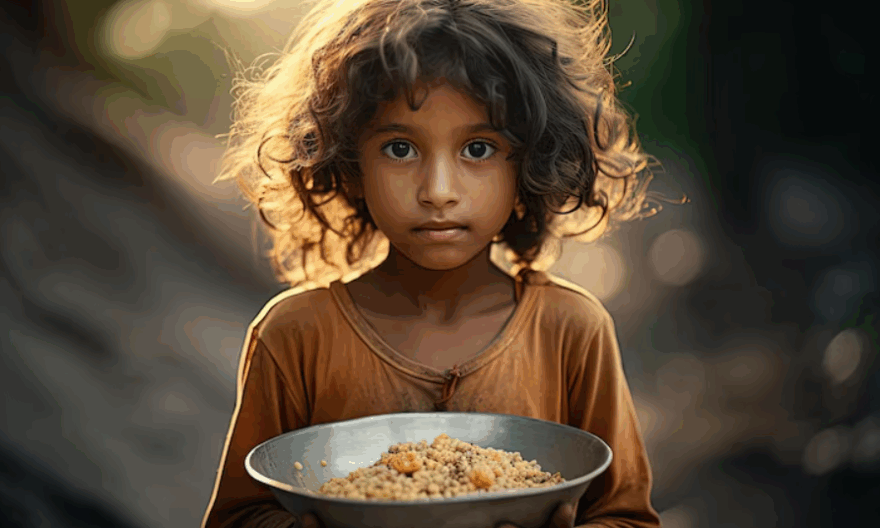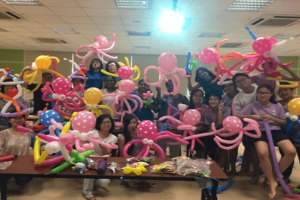
Food banks often step in to feed hungry families. They stock bare shelves and ease heavy worries. But they often stumble when it comes to helping malnourished children.
These children don’t just need food to fill their bellies—they need meals that grow their bones, spark energy, and build strength. Food banks hand out what they gather, but much of it fails to fuel a child’s growing body the way it should.
The Gap Between Eating and Growing
Most food banks focus on how much food they give, not what kind. Children eat, but the food often lacks what their bodies need. The meal might stop hunger, but it still leaves a child tired or sick.
Food bank challenges in helping malnourished children often come from this focus on quantity over quality. Real nutrition means more than full tummies—it means meals with protein, vitamins, and minerals that help bones grow and minds stay sharp.
Big problems include:
- Donated food is mostly tins or packets
- Fresh items like fruit and veg rarely arrive.
- Key nutrients like iron and calcium go missing.
Kids need colourful plates. They need greens, grains, fruit, and dairy. Instead, they get food that fills but doesn’t strengthen.
Why the System Crumbles
Food banks rely on donations. These often come from kitchen clean-outs or supermarket leftovers. People mean well, but they donate food that’s close to expiry or cheap to buy.
This means children receive what’s available, not what they truly need to grow healthy and strong. Without a smart system, good food slips through the cracks.
Real issues:
- No fridge space to store fresh food
- Few trained workers know children’s nutrition needs.
- No plans to match food to each child’s health
Even healthy food sometimes goes to waste or ends up with the wrong family. Fast-moving systems forget slow-growing needs.
What Must Change Now
To help malnourished children, food banks must stop and rethink. Feeding lots of people doesn’t help if the food isn’t right. Strong bodies and sharp minds need strong meals. The focus must shift from how much food is given to what kind of food is needed.
Food bank challenges in helping malnourished children often come from this very gap: quantity over quality. That change starts with smarter choices and a focus on real nutrition.
Here’s what must happen:
- Work with local farms to gather fresh produce
- Train staff to spot poor diets and signs of malnutrition
- Create food boxes made just for children’s needs.
Children’s boxes should include:
- Apples, bananas, and berries
- Carrots, spinach, and tomatoes
- Milk, yoghurt, and cheese
- Beans, lentils, oats, and brown rice
This mix helps children grow, focus in school, and fight illness. Every item in the box should have a reason to be there.
Take the Right Step Forward
Feeding hungry children is good. Feeding them right is better. Every child deserves more than just a full stomach. They deserve food that helps them run, read, play, and dream. The future starts with well-fed, well-nourished kids. If food banks change how they work, they can lift a generation.
With better meals, children can:
- Grow taller and stronger
- Focus better in school.
- Fight off sickness more easily.
- Smile, play, and feel full of energy.
Final Thought
Food banks do vital work, but they must grow with the needs of the children they serve. Hunger and malnutrition are not the same, and feeding must go beyond filling plates. Helping malnourished children means offering more than just meals—it means choosing food that builds strength, health, and hope.
When we give the right food, we give children the chance to learn, play, and thrive. The path to a healthier future begins with one small change: putting nutrition first.
Quora Questions
1. Why Food Banks Miss the Mark for Malnourished Children—and What Must Change
Feeding kids means not only filling their stomachs. Feeding kids only works when the food helps their bodies grow strong. To fix malnutrition, food banks must swap quick fixes for real fuel that powers young bones and sharp minds.
Smart ways to beat malnutrition:
- Pick food with purpose: Choose meals packed with iron, protein, fibre, and calcium.
- Trade tins for fresh picks: Add apples, milk, carrots, spinach, and oats.
- Craft boxes for kids: Shape meals to match their size, age, and health.
- Paint plates with colour: Bright foods often pack better goodness.
Build a Stronger System
Kids don’t thrive on scraps. They need food that helps them move, think, and grow. Food banks must rise higher and change the way they serve children.
Steps to spark change:
- Train helpers to spot poor diets and share easy ways to eat better.
- Team up with farms to gather fresh crops each week.
- Pack meals with care to feed brains and build bones.
- Pull in support from schools and doctors for extra help.
Food banks can do more than stop hunger. They can fuel a child’s future. Every box can plant strength, spark energy, and shape a brighter tomorrow.
2. What Do They Feed Children Suffering from Malnutrition?
Malnutrition is not a problem of any particular country or community. Developing countries are fighting hunger issues. When any country is suffering from malnutrition, food is not enough food for them. They need a fresh and healthy, balanced meal that helps them to grow and stay healthy from the inner body. These meals must pack real power and boost their muscles and mind.
Strong foods that help them heal:
- Crack eggs and pour milk to grow bones and sharpen thinking
- Scoop lentils and toss beans to build muscle and stop weakness
- Spread peanut paste – full of energy and good fats.
- Peel bananas and slice oranges – to fight sickness and boost energy.
- Stir rice and oatmeal to keep their bellies steady and full.
These foods do more than fill up—they fix what hunger has broken.
Build Bodies, Boost Minds
Many sick children arrive slow, sleepy, and too thin. The right food helps them stand taller, smile brighter, and learn faster. Every bite can spark healing.
How the meals work:
- Sip milk and spoon yoghurt – to grow strong teeth and bones
- Chop green veggies – to clean blood and fight tiredness.s
- Bite into fruit – to brighten minds and clean bodies.
- Munch nuts and grains – to keep energy lasting all day.
Good food brings tired children back to life. It builds them up, one meal at a time, until they stand strong and ready to grow.



